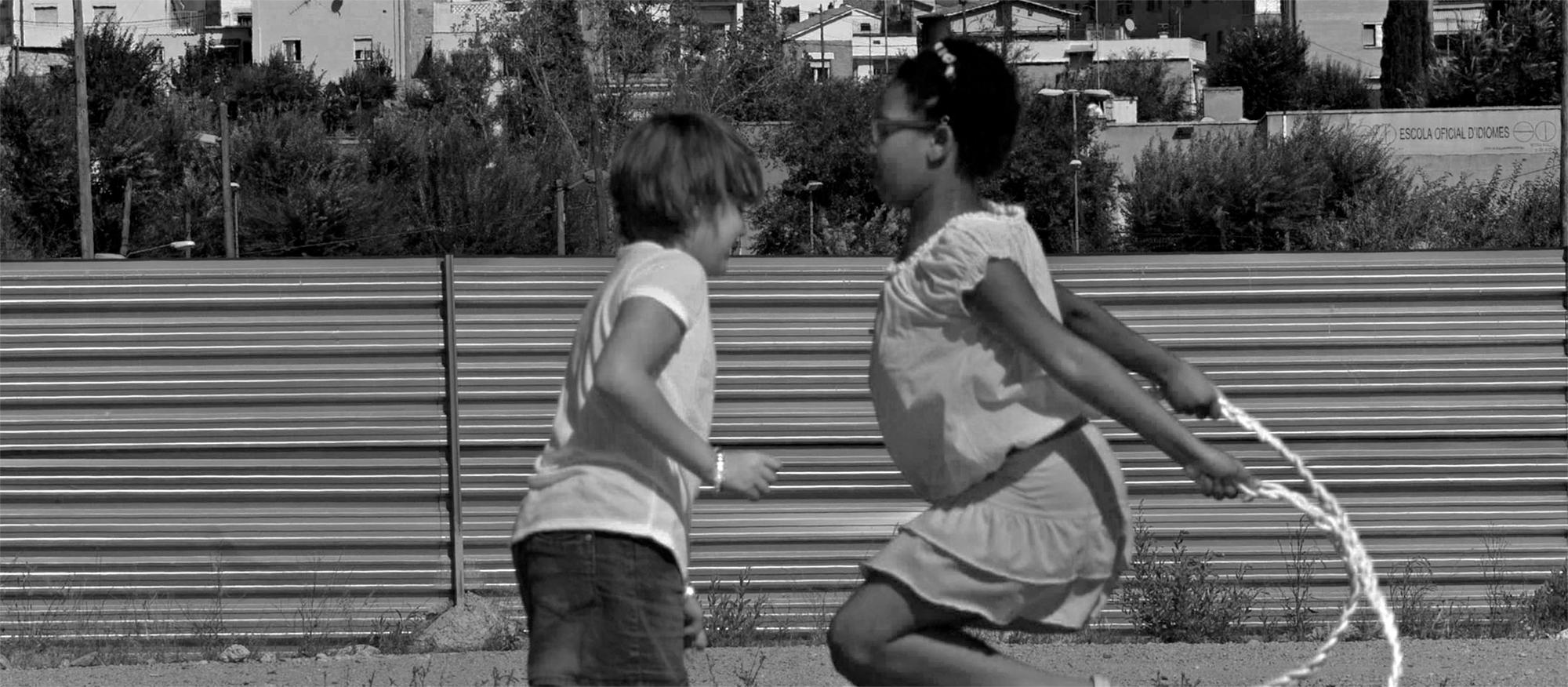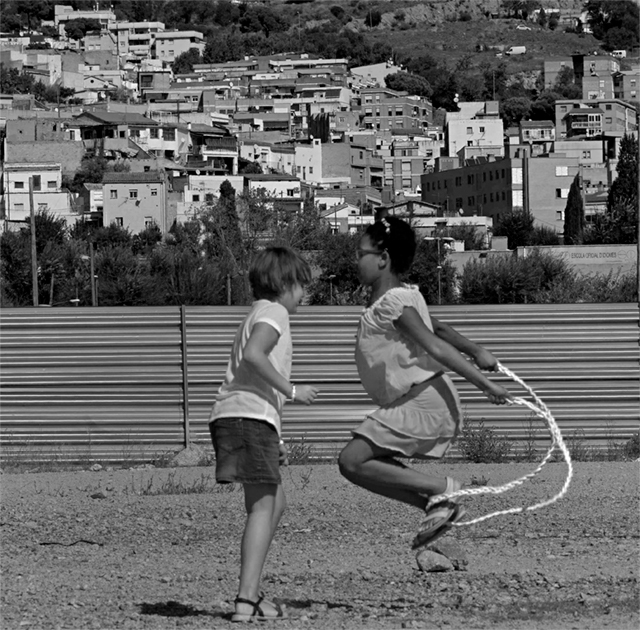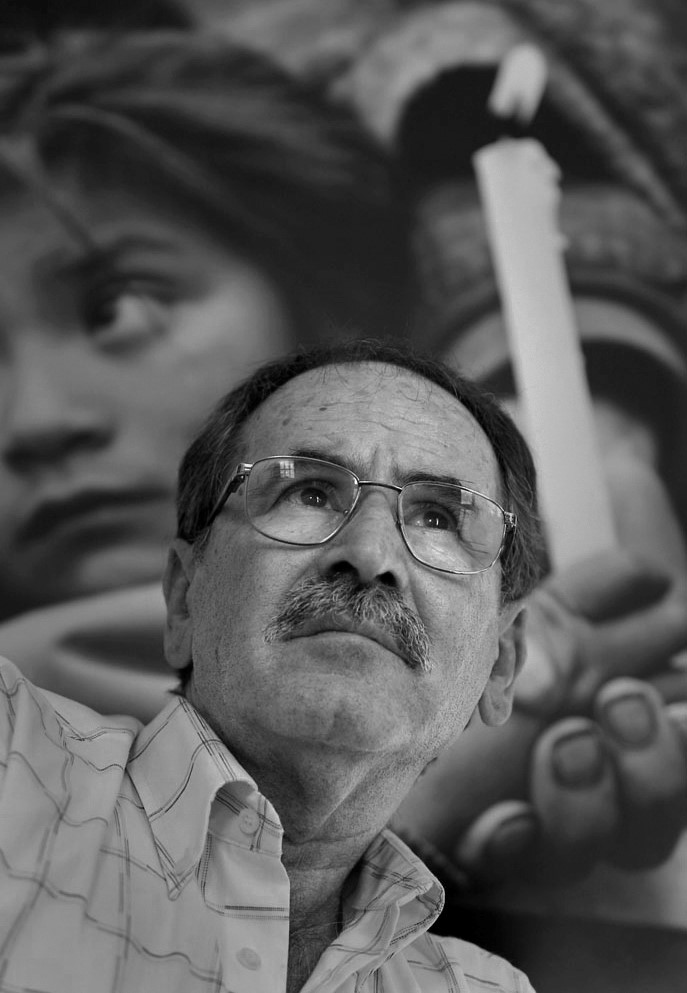“Professional, self-taught photographer and vocational human being” is how Joan Guerrero defines himself, following half a century behind the camera. Since his arrival in Santa Coloma de Gramenet in the 1960s to this day, he hasn’t stopped documenting his city through the migrants that have progressively relocated here (Spaniards back then, and hailing from every continent today).
The selection of photographs entitled Human glances documents how migrants and their descendants live side by side in Santa Coloma de Gramenet and come together on the banks of the Besós river, a metaphor for what their arrival sometimes has in store for them, living on the fringes. Committed to people, Joan Guerrero advocates the power of photography as a tool for change and reflection. An example thereof is the Gramenet Imatge Solidària association of photojournalists [that raises money for social causes through their exhibitions], which he has chaired for ten years.

“These girls from two different cultures symbolise the coming together of two visions. As well as the values of their city: Santa Coloma de Gramenet is youth, solidarity and struggle”, asserts Joan Guerrero. In the background to the right, in the Singuerlín neighbourhood, we can make out the A for anarchist, a symbolism that has been respectful and respected, according to the photographer. © Joan Guerrero

For Joan Guerrero this photograph could be “that soft light that modestly could make things change”. Behind the gestures and glances, tenderness, affection and humanity could be the answer to so much suffering. “Love and empathy for others would be the greatest revolution for me, that the children of others were ours too.” © Joan Guerrero

Guerrero recalls that the Besòs river, where this photograph was taken, came to be considered one of Europe’s most polluted rivers. A few years ago it was a sewer while today it has become a meeting place for many cultures. “This father teaching his daughter how to ride a bike reminds me of many families when they arrived right here in the 1960s.” © Joan Guerrero

“It might look like Mumbai, but it is Can Zam Park, which is becoming the wonder it must have been in the 1960s. Back then it was a plot laden with plastic earmarked for urbanisation. And the tree in between the two Indian women, nature itself, symbolically separates them”, as Joan Guerrero sees it. © Joan Guerrero

Miscegenation and coexistence are combined in this photo. Through this picture, Guerrero confirms that different communities of women are committed to supporting one another in Barcelona’s old quarter. © Joan Guerrero

“It might look like Mumbai, but it is Can Zam Park, which is becoming the wonder it must have been in the 1960s. Back then it was a plot laden with plastic earmarked for urbanisation. And the tree in between the two Indian women, nature itself, symbolically separates them”, as Joan Guerrero sees it. © Joan Guerrero

Miscegenation and coexistence are combined in this photo. Through this picture, Guerrero confirms that different communities of women are committed to supporting one another in Barcelona’s old quarter. © Joan Guerrero

What’s out of the frame can be just as important as what’s shown in the picture. Beyond the two children playing football, that Sunday afternoon in Besòs there were young people playing cricket, people taking a stroll and families having a picnic. They were all sharing a space of recreation. And again it evokes the similarities with its past and the migrants in the 1960s, when families went to engage in the same pursuits in Les Planes instead of on the banks of the Besòs river. © Joan Guerrero
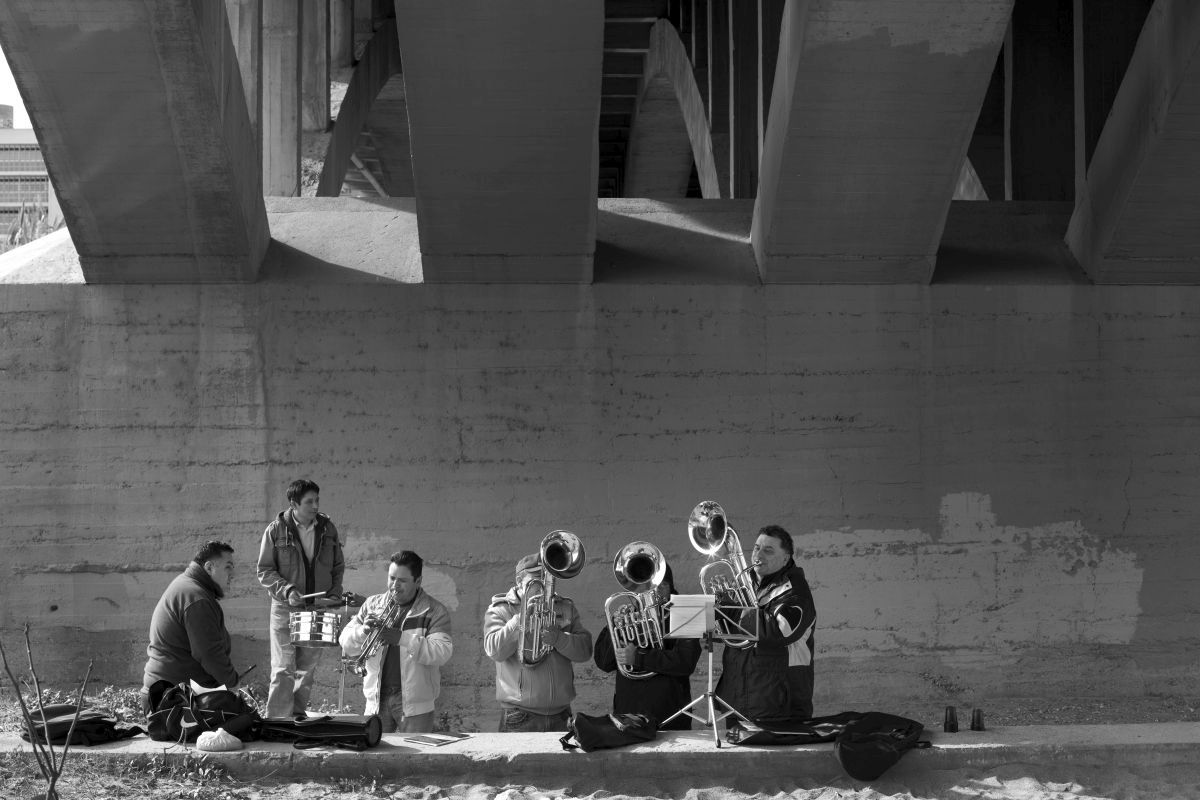
Many cultures come together across the length and breadth of Besòs park. Each one seeks out a space where they feel at home to engage in activities. Like this band of Latin American musicians, who chose to set up under one of the bridges that cross the Besòs river. “The sound reverberates under the bridge and, in turn, the deck is a natural setting.” © Joan Guerrero
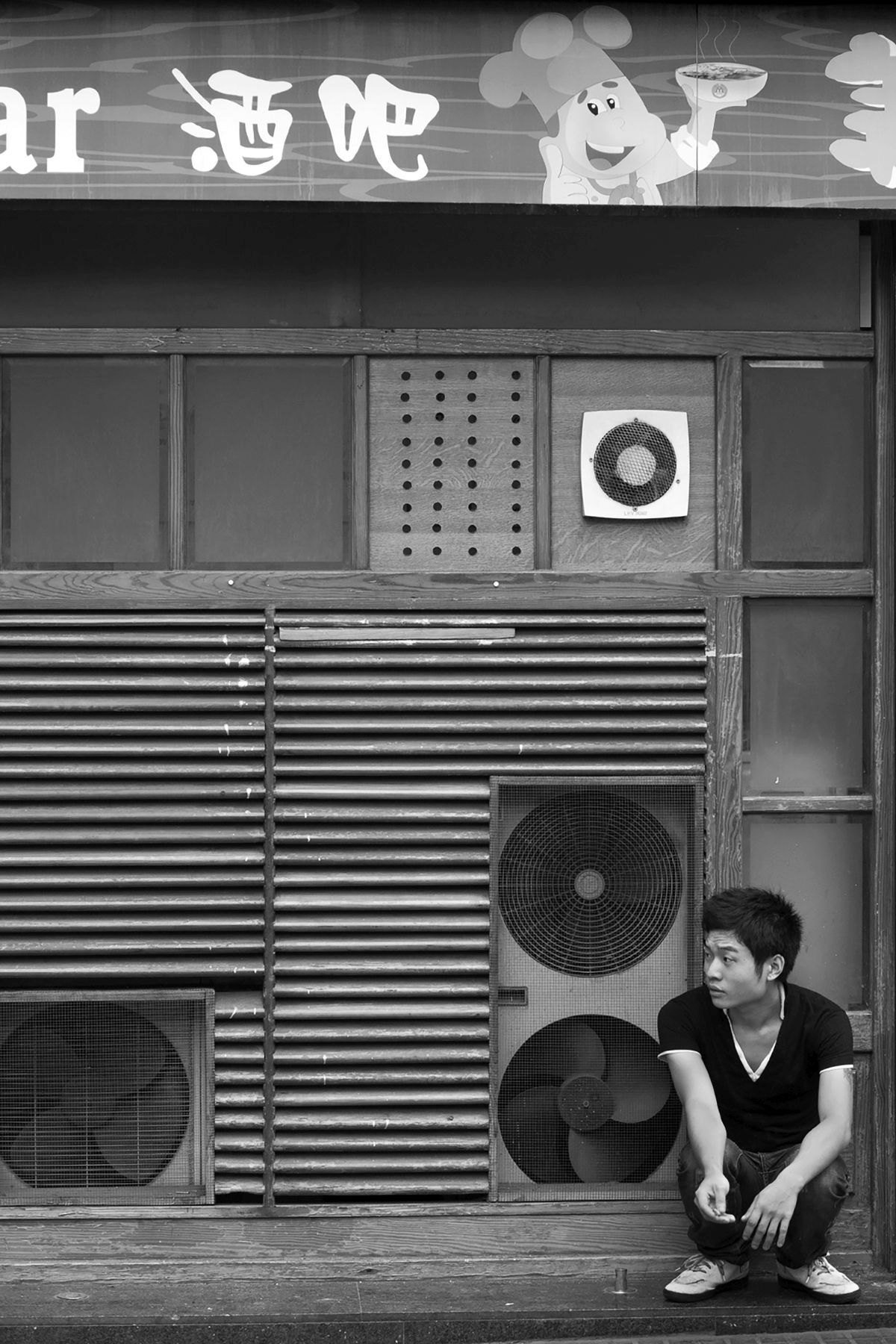
“Bittersweet.” Sometimes a single adjective says so much and also invites free reflection. Joan Guerrero did not wish to add anything else to this photo’s description, which features a young Chinese man resting by the door of a restaurant run by someone from his community. © Joan Guerrero

“This girl was running from left to right when I took the photo”, in which an old sign from the 1960s or 70s is seen, Joan Guerrero recalls. Here the two worlds that he has photographed for half a century in the Fondo neighbourhood merge. “A neighbourhood that, if made richer back then by the arrival of different cultures from Galicia, Extremadura and Andalusia, in the 21st century it has made even richer by cultures from all over the world.” © Joan Guerrero
The newsletter
Subscribe to our newsletter to keep up to date with Barcelona Metròpolis' new developments



